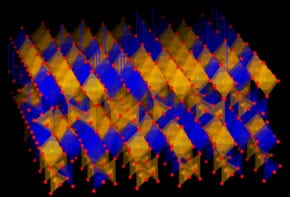
A modular robotics system could take chemistry a step closer to the complete automation of organic synthesis. A team of researchers have developed the ‘Chemputer’, along with a general chemical programming language to automate the assembly of complex molecules, reported in Science. They demonstrated its ability to synthesize pharmaceutical compounds without human intervention.
The synthesis of complex organic molecules is one of the most labour-intensive branches of chemistry. Despite advances in automation, driven by the availability of digital labware, current technologies are limited to single classes of reactions. Now, Sebastian Steiner and co-workers from The University of Glasgow have come up with a generalized approach to digitizing synthesis in order to tackle this problem. Building on the experience of tens of thousands of chemists and hundreds of years of chemical literature, their advances could offer reliable access to complex molecules.
One device for all syntheses
The synthesis of drug molecules draws on techniques from many areas of chemistry. However, most of these reactions boil down to the same procedure. This involves mixing several reagents in the correct order, often with heating or cooling, followed by steps to isolate and purify the product. By devising a robotic platform capable of these operations, the team created a system that could handle a large fraction of all kinds of organic synthesis.
With the ambitious objective of automating all organic syntheses, flexibility in the team’s design for the Chemputer was key. Its architecture consists of a ‘backbone’ made up of traditional and inexpensive labware, with a number of syringe pumps and selection valves. The user can also increase the number of possible automated reactions by incorporating more modules. While trained chemists use visual cues to make decisions during a synthetic procedure, the researchers achieved automation using a conductivity sensor. They even suggest this could outperform human vision.

Learning from industry
Coding Chemistry
The team developed software to combine individual steps into entire syntheses. They used a chemical programming language to map frequently used instructions into discrete steps and created the ‘Chempiler’ programme. This produces instructions for the Chemputer. For example, after receiving the command ‘start stirring the reactor’, the Chempiler will identify the required module in the Chemputer and execute the instruction. Crucially, the instructions can be coded by users with little programming knowledge.
Each synthetic route is captured as a digital code that can be transferred between platforms. A user can then directly run any published synthesis. Ultimately it could be possible to go straight from reaction database to a chemical code that can run the robotic platform. This offers huge advantages to the reproducibility of any synthesis.
Synthesising drugs automatically
The researchers assembled three complex drug molecules (Nytol, sildenafil and rufinamide) to demonstrate the ability of the robotic platform. Beginning with traditional written schemes for the syntheses, they then used the Chemputer to perform all stages of the synthesis under Chempiler control. The whole process was executed autonomously, with no need for human intervention. As well as comparable yields and purity, the group also produced these molecules in a shorter time frame than would be possible manually.



